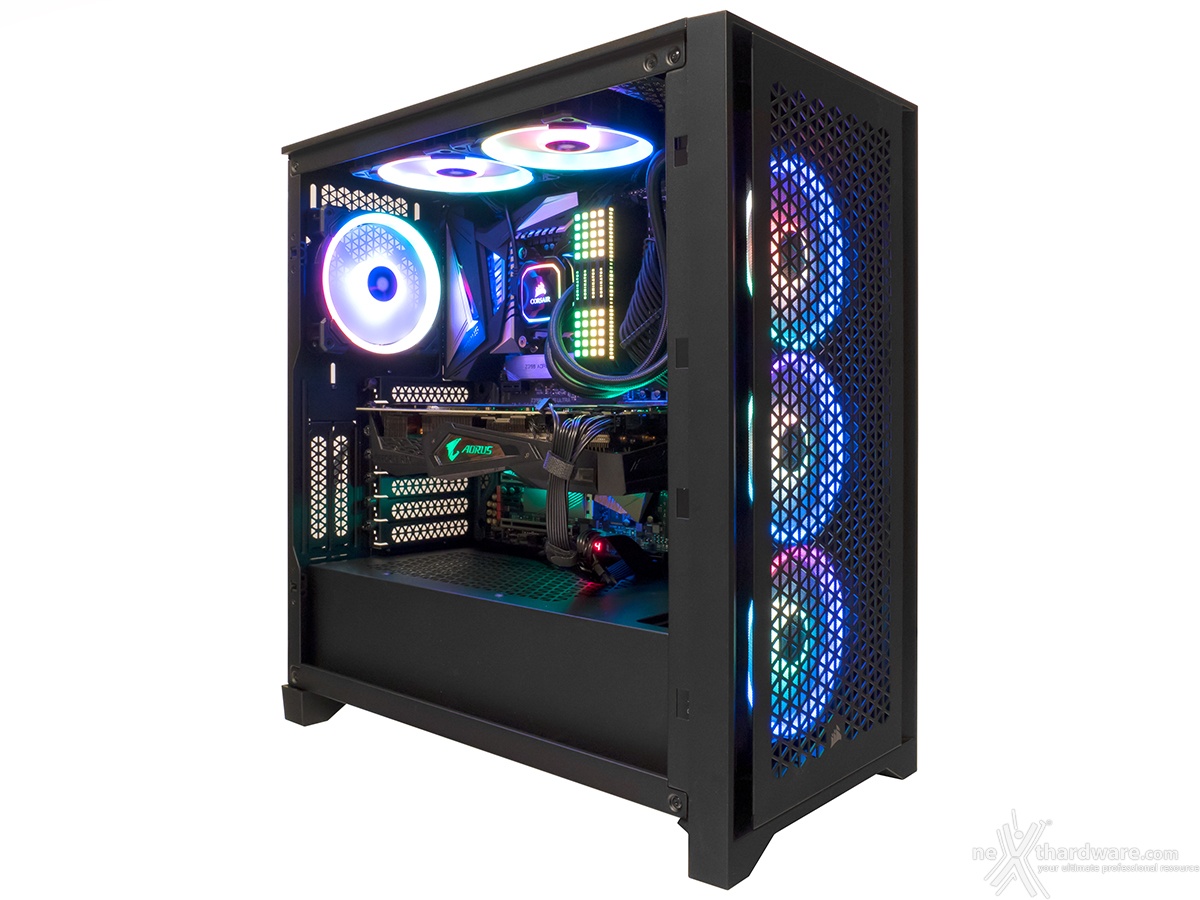

If you bend the cables back towards the rear of the case, you should theoretically be able to install both without a problem as long as you plug in the cables after the power supply is secure, but that will be more frustrating. To get around this, we had to remove the HDD caddy from the case and install the PSU first, however if you do that there’s no way to reinstall the caddy afterwards. Unfortunately, our Corsair HX750 PSU is too large to fit in with the cables preinstalled and the hard drive caddy in its factory position. When it comes to installing your power supply, we always recommend - for modular ones - you pre-install the cables first. It can fit the radiator at the top, but you cannot add fans. I have the Phantek P400A on my old PC, all air cooling. The Phantek P400A can only mount the radiator in the front since the top is not enough room. That would eliminate the clearance issues and also provide ample room to tuck those excess cables out of the way as well. If you plan to use a CPU AIO cooler then go with Corsair 4000D Airflow (can be mounted on the top preferred or front). Rear of Caseįor improved compatibility - and as we move away from traditional 3.5-inch drives - we’d like to have seen a half-height hard drive caddy that supports a single 3.5-inch drive in the bottom, that you can slide in and out of the case easily. That said, you’d be far better off mounting the AIO in the front, and running exhaust fans in the roof instead. If you do decide to go that route, we recommend you install your CPU/EPS power cables before installation of the AIO. The roof additionally supports up to a 240mm AIO, with offset mounting locations to reduce motherboard conflicts. There’s also ample room for a standard-thickness 360mm AIO liquid-cooler in the front of the chassis, although you may have to remove the HDD cage to fit it. However, unlike the Pure Base, it’s baked into the motherboard tray itself as opposed to a removable bar. Similar to the be quiet! Pure Base 500 we reviewed earlier this year, Corsair’s also integrated mounting locations for two 2.5-inch SSDs in the front of the case. On top of that, Corsair’s also included support for vertically mounted GPUs as well, although you will have to buy that adapter separately (which sells for $60, direct from Corsair). There’s a soft-touch paint finish throughout, plenty of rubber grommets, and cable passthrough holes located in key positions, for things such as the HD audio front panel header, the PCIe power, and more. The interior of the Corsair 275R Airflow, although spartan in appearance, actually comes together quite nicely. The rear panel has two retainable thumb screws situated at the back of the case. The AIRFLOW variant is available for either case, featuring an attractive mesh screen instead of a solid steel front panel, significantly improving airflow.To remove the glass side panel, simply take off the thumb screws from each corner, and lift the panel off.

It blends comfortably into the rest of the design, but the yellow may not appeal to some builders. Otherwise, it will only fit a 240mm radiator.īoth cases come equipped with effective and easy to clean dust filters on the top and bottom, featuring a small yellow tab matching Corsair’s style. The case has space for only one at a time either a 360mm radiator in the front or a 280mm radiator on top if low-profile RAM is used. The 4000D still supports plenty of cooling setups, but its smaller size can become an issue with radiator placement. An additional radiator can also fit in the front of the case, and a push/pull 360mm fits in the top of the chassis. The 5000D’s inclusion of motherboard tray fans is the largest difference in cooling ability between the two, opening up additional possibilities for water cooling. In comparison, the 4000D includes a respectable 6x 120mm fan slots, 4x 140mm, and space for one radiator in 360mm, 280mm, or 240mm size. However, due to its increased size and radiator support, the 5000D takes the lead here, featuring a total of 10 possible 120mm fan slots, 4x 140mm, and 2x 360mm radiator slots. Both of these cases excel at cooling, offering a number of fan and radiator placement options.


 0 kommentar(er)
0 kommentar(er)
